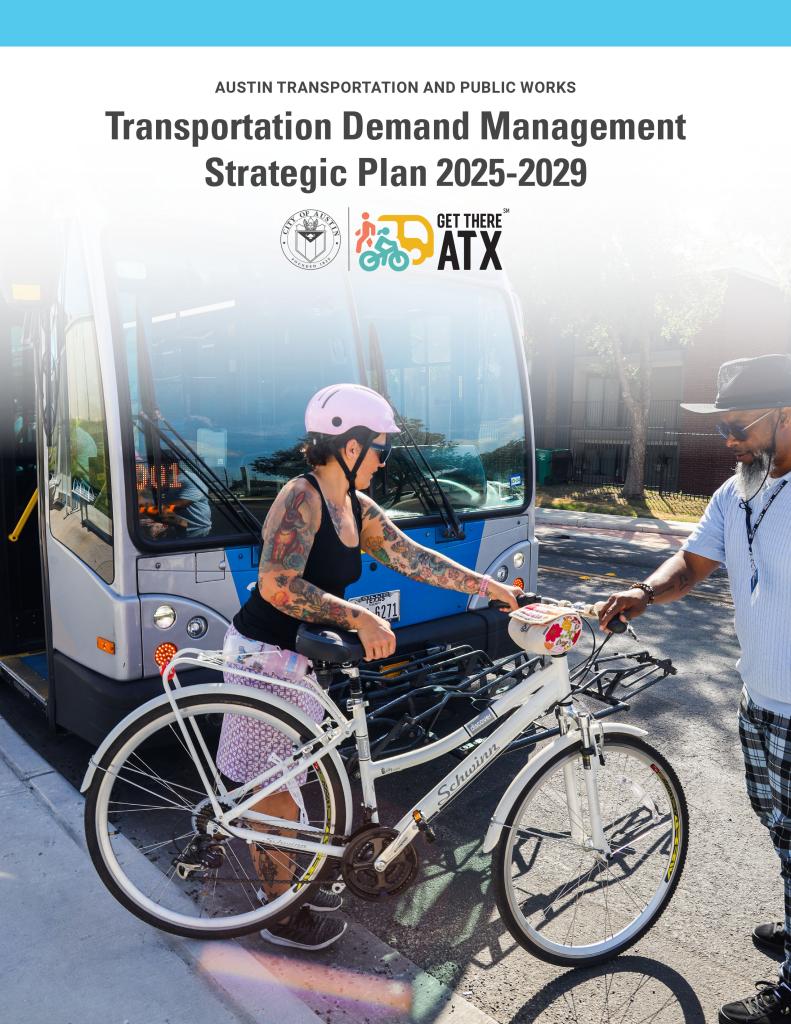City of Austin Releases Transportation Demand Management 5-year Strategic Plan
Traffic jams, searching for parking, air pollution — these things may feel inevitable in our modern world.
They’re not.
The City of Austin fights congestion, and its bad side effects, with policies and programming that make it easier for people to walk, bike, carpool, take transit or telework — shifting focus from moving vehicles to moving people. The idea is to manage congestion by managing demand — an approach called Transportation Demand Management (TDM).
The City created the TDM Program in 2018, and now, for the first time, the Program has released a five-year strategic plan.
The timing of the plan’s release is no coincidence. Greater Austin is already one of the fastest-growing metro areas in the nation, and that’s expected to continue, adding one million residents to the region by 2040, including 300,000 in Austin itself. At the same time, several major, multi-year infrastructure projects have begun, including the Texas Department of Transportation (TxDOT)’s redesign of I-35 and the creation of Austin’s first light rail system.
In the short term, construction of these projects has the potential to disrupt Austin travel, so now is the time to shift people’s mobility habits through education, incentives and more choices.
In 2019, the City adopted the Austin Strategic Mobility Plan (ASMP), which included a “50/50 mode share goal” — that is, to have only 50% of trips accomplished by driving alone, with the other half by something else, including telework, transit, walking, bicycling and carpooling/rideshare. At the time the ASMP was published, driving alone accounted for 74% of the total. As of 2023, we estimate that has dropped to 59%.
The idea wasn’t to take away cars, but to keep the number of cars steady even as the population grows — by encouraging more people to use other options.
Now, the TDM strategic plan will give more focus to this effort.
Key strategies the City will use include:
- Teaching employers, commuters, students, new residents and visitors about their transportation options.
- Ensuring developments include amenities (such as bike racks or workplace showers) that encourage people to use those options.
- Expanding the CapMetro Bikeshare system and creating “mobility hubs” where people can easily connect between transit, bikes and other services.
- Partnering with local organizations to host community bike rides, walking tours and other events that promote various types of transportation.
- Improving data collection on biking and walking to help with planning.
- Leading by example: expanding mobility offerings and incentives for City of Austin employees.
In 2024, the City received a $47.9 million Climate Pollution Reduction Grant from the Environmental Protection Agency. The grant will help the City team up with regional partners (TxDOT, Central Texas Regional Mobility Authority, Travis County, CapMetro, Capital Area Rural Transportation Service and Movability) to improve regional transit service, invest in infrastructure and inspire changes in transportation habits.
TDM is a big topic that we’ll cover more in future updates. But the main idea is simple: the best way to reduce traffic and air pollution is to give people choices — and the City of Austin is working hard to make those choices easy for everyone.


